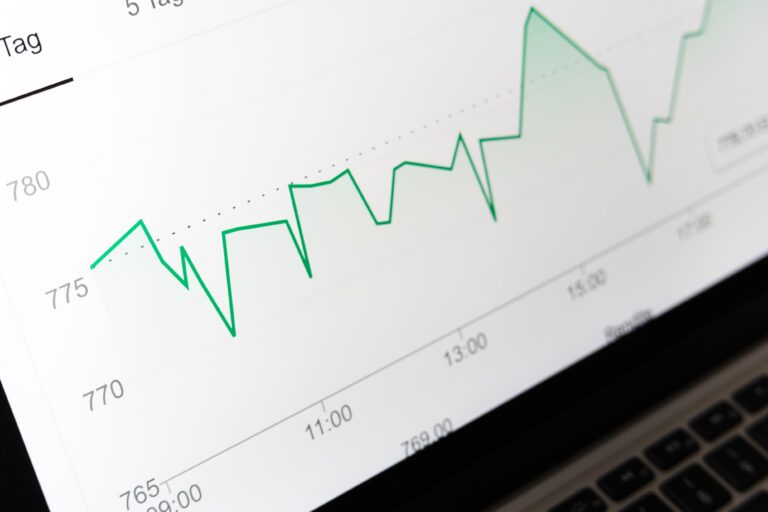Marketing is a vital component of any business. Without it, companies would struggle to generate leads, create brand awareness, or drive sales conversions. Measuring marketing ROI is an essential part of evaluating a marketing campaign’s effectiveness. In this blog, we’ll look at how marketing teams can measure ROI and identify the top 9 metrics that marketers should be focusing on in 2023 to ensure their business is successful.
If you are a marketing candidate looking for a new role, upload your CV with us today. If you are an employer looking to make an addition to your marketing team, look at our specialist marketing recruitment services and contact us today.
Measuring marketing ROI
ROI measures the efficiency of an investment. It is the ratio of the investment’s net profit to the investment cost. In marketing, ROI is a measure of the profitability of a campaign. To calculate marketing ROI, you need to know the cost of the campaign and the revenue generated by it. The formula for calculating marketing ROI is as follows:
ROI = (revenue – cost) / cost x 100%
For example, if a company spends £10,000 on a marketing campaign and generates £20,000 in revenue, the ROI would be 100%:
ROI = (20,000 – 10,000) / 10,000 x 100% = 100%
It’s important to note that ROI can be negative if the campaign cost more than the revenue it generated.
Top 9 marketing metrics to track
Marketing teams need to measure the right metrics to evaluate the effectiveness of their campaigns and showcase their impact in performance reviews with their line manager. We’ve split up the top metrics into three categories, depending on the main objective of the marketing team: drive lead generation, drive brand awareness, or drive sales conversions.
Lead generation metrics
Lead generation is the process of attracting and converting potential customers into leads. The following metrics are critical for measuring the effectiveness of lead generation campaigns:
- Cost per lead (CPL)
CPL is the amount of money a company spends to generate a single lead. The formula for calculating CPL is:
CPL = total cost of campaign / number of leads generated
The average CPL in the UK is around £35-£45, depending on the industry. However, the CPL can vary significantly depending on the type of campaign and the target audience.
Considerations: The CPL can be affected by the quality of the leads generated. A high CPL may not be a problem if the leads are of high quality and have a high conversion rate.
2. Conversion rate
The conversion rate is the percentage of leads that become paying customers. The formula for calculating conversion rate is:
Conversion Rate = (number of leads converted / number of leads generated) x 100%
The average conversion rate in the UK is around 2.5%, depending on the industry.
Considerations: A low conversion rate can indicate a problem with the quality of the leads generated, the product or service offered, or the sales process.
3. Lead-to-customer rate
The lead-to-customer rate is the percentage of leads that become paying customers. The formula for calculating lead-to-customer rate is:
Lead-to-customer rate = (number of customers / number of leads generated) x 100%
The average lead-to-customer rate in the UK is around 20-25%.
Considerations: The lead-to-customer rate can be affected by the quality of the leads generated, the product or service offered, and the sales process.
Brand Awareness metrics
Brand awareness is the level of familiarity that consumers have with a brand. The following metrics are critical for measuring the effectiveness of brand awareness campaigns:
- Reach
Reach is the number of people who see a marketing campaign. The formula for calculating reach is:
Reach = total audience / impressions
The average reach in the UK varies depending on the industry and the type of campaign.
Considerations: Reach is a critical metric for brand awareness campaigns, but it doesn’t necessarily guarantee engagement or conversion.
2. Engagement rate
Engagement rate is the percentage of people who interact with a marketing campaign. The formula for calculating engagement rate is:
Engagement rate = (total engagements / total reach) x 100%
Engagement can include likes, comments, shares, and clicks.
Considerations: Engagement rate is a good indicator of how effective a campaign is at capturing the attention of the target audience. However, it doesn’t necessarily guarantee conversion.
3. Net Promoter Score (NPS)
NPS is a measure of how likely a customer is to recommend a brand to others. It’s calculated by subtracting the percentage of detractors (people who wouldn’t recommend the brand) from the percentage of promoters (people who would recommend the brand). The formula for calculating NPS is:
NPS = % promoters – % detractors
The average NPS in the UK varies depending on the industry.
Considerations: NPS is a good metric for measuring brand loyalty and customer satisfaction. However, it doesn’t necessarily measure brand awareness or reach.
Sales conversion metrics
Sales conversions are the number of leads that become paying customers. The following metrics are critical for measuring the effectiveness of sales conversion campaigns:
- Conversion rate
The conversion rate is the percentage of leads that become paying customers. The formula for calculating conversion rate is:
Conversion rate = (number of customers / number of leads generated) x 100%
The average conversion rate in the UK is around 2.5%, depending on the industry.
Considerations: A low conversion rate can indicate a problem with the quality of the leads generated, the product or service offered, or the sales process.
2. Customer Acquisition Cost (CAC)
CAC is the amount of money a company spends to acquire a single customer. The formula for calculating CAC is:
CAC = total cost of sales and marketing / number of customers acquired
The average CAC in the UK varies depending on the industry and the type of campaign.
Considerations: A high CAC can indicate that the sales and marketing costs are too high or that the company needs to improve the efficiency of the sales and marketing process.
3. Customer Lifetime Value (CLV)
CLV is the amount of money a customer is expected to spend on a company’s products or services during their lifetime. The formula for calculating CLV is:
CLV = average value of a sale x number of repeat transactions x average retention time
The average CLV in the UK varies depending on the industry and the type of business.
Considerations: CLV is an important metric for understanding the long-term value of a customer. A high CLV can indicate that a company is doing a good job of retaining customers and generating repeat business.
Recommendations for learning about marketing ROI
Learning about measuring ROI is essential for any marketer who wants to succeed in today’s data-driven world. Here are ten recommendations for marketing learning materials:
This book provides a comprehensive overview of digital marketing analytics and how to measure ROI. It covers topics such as web analytics, social media analytics, and ROI frameworks.
While not strictly a marketing book, “The Lean Startup” provides valuable insights into how to measure ROI and the importance of experimentation and iteration.
This book is a comprehensive guide to measuring marketing performance and ROI. It covers topics such as customer acquisition, retention, and lifetime value.
This podcast covers a wide range of marketing topics, including measuring ROI. It provides valuable insights into the latest trends and best practices in marketing.
This podcast provides actionable marketing advice and covers topics such as SEO, content marketing, and social media. It also provides insights into how to measure ROI and optimise marketing campaigns.
This guide provides a comprehensive overview of conversion rate optimisation and how to measure ROI. It covers topics such as landing page optimisation, A/B testing, and analytics.
While not strictly a marketing book, “The Art of SEO” provides valuable insights into how to measure ROI and optimise search engine rankings. It covers topics such as keyword research, link building, and analytics.
The Moz Blog provides valuable insights into SEO, content marketing, and analytics. It also covers topics such as measuring ROI and optimising marketing campaigns.
MarketingProfs is a valuable resource for marketers who want to learn about measuring ROI and optimising marketing campaigns. It provides a wide range of articles, webinars, and training courses.
Google Analytics Academy provides free training courses on how to use Google Analytics to measure ROI and optimise marketing campaigns. It covers topics such as goal tracking, e-commerce tracking, and conversion tracking.
Conclusion
Measuring ROI is essential for any marketer who wants to succeed in today’s data-driven world. By tracking the right metrics and using the right tools, marketing teams can evaluate the effectiveness of their campaigns and make data-driven decisions. The top 9 metrics we’ve identified in this blog are critical for measuring lead generation, brand awareness, and sales conversions. However, it’s important to remember that not all metrics are created equal. Some metrics can be misleading or irrelevant to a marketing campaign’s success. By avoiding vanity metrics and focusing on the metrics that matter, marketing teams can drive growth and achieve their business objectives.




